- Home
- Simon Winchester
Krakatoa: The Day the World Exploded Page 7
Krakatoa: The Day the World Exploded Read online
Page 7
Perhaps his spell in history's wilderness is now coming to an end. In April 2000 his grave in Dorset was refurbished;* and in November 2001 a plaque was unveiled in what is now the Royal Society's Reynolds Room, noting that a century and a half beforehand the papers of Charles Darwin and Alfred Russel Wallace had been read there, which formally set in motion a whole new science of evolutionary studies.
In recent years there have been kindly new biographies of Wallace, new studies of his contributions to science, fresh examinations of the papers of Darwin, Lyell, Hooker and all the others involved in the evolution of evolutionary thinking. There seems in consequence a growing sympathy these days for the idea that Darwin may have behaved less than fairly to the man who had the same idea as he had, and at the very same time – but who had the misfortune of writing everything down almost immediately and shouting the news from the rooftops, of being less gently born and less well connected than the master of Down House, and of spending his declining years more interested in eccentric sciences, out on the fringes of respectability. To some these days, the idea that Wallace's only memorial is merely a line that passes unseen across the sea seems a melancholy insufficiency for all of his many achievements and ideas.
The Wallace Line, however invisible and however controversial (in later years, because of technical arguments among the world's community of zoogeographers), does at least have the merit of being directly relevant to both the makings and the violent unmakings of Krakatoa. It may have played only a marginal role in the development of the theory of evolution of life. But it does play, if unwittingly, a very significant part in the much newer theory of plate tectonics, the evolution of the earth.
Wallace's ideas about it were first made public at the Linnean Society on 3 November 1859 – seventeen months after the famous Linnean Society presentation on evolution and, as then, while he was 5,000 miles away from Burlington House. (He was in Ambon at the time, just back from a half-year in Sulawesi spent indulging in what he incautiously regarded as the ‘capital sport’ of shooting birds of paradise. He was coming under considerable pressure from his family, who had not seen him for five years, to return home. But he said he felt completely happy and at home in the islands, and was not to come back to England until 1862.) His observations of the distribution of the archipelago's immense stock of animals reflected precisely Philip Sclater's findings on the distribution of birds: the representatives of the Australian kingdom of animals lived in the more easterly islands, and the members of the Indian families to their west.
He was able to show, for example, that in the west there were apes and monkeys: there were none in either Australia or the
The Wallace Line – Australian fauna (cockatoos, kangaroos) to its east, Indo-European thrushes, monkeys and deer to its west.
Australian-influenced eastern part of the archipelago. Flying lemurs, tigers, wolves, civets, mongooses, polecats, otters, bears, deer, cattle, sheep, tapirs, rhinoceros, elephants, squirrels, porcupines and scaly anteaters were also in the west – and these weren't native to Australia (or, it almost goes without saying, to New Zealand, which was so isolated for so long that it had no native mammals or snakes at all) or to the eastern islands.
Out in those eastern groups, though – where the cloves and nutmegs grow in wild profusion – there were all manner of animals wonderfully unfamiliar to the newcomer from Usk. These included kangaroos, opossums, wombats and the duck-billed platypus. Not an ox or a squirrel, an elephant or a tapir on any of these islands – but instead animals that raise their young in pouches, or hop, or live half in and half out of water, have webbed feet, lay eggs and suckle their young, and flightless birds, and cockatoos.
Alfred Russel Wallace enjoys such fame as he has because he observed all of this bewildering profusion with great care, noted with exactitude where each animal or bird lived – or, just as important, did not live – and then drew a long and sinuous line that separated these two very distinct biological regions. The line, which was announced to the Linneans in 1859 and refined in a more substantial speech in 1863, wandered in an approximately north-east to south-west direction. It began to the south of Mindanao, the most southerly of the main Philippine Islands, and snaked to the north of the oddly shaped island now known as Sulawesi, but which was then called the Celebes.* It then swept south through the Strait of Macassar, leaving Borneo on its western, Indian side, and then headed across the Java Sea to the tightest-imaginable division: the 15-mile-wide and very deep strait between the islands of Bali and Lombok.
The contrast is nowhere so abruptly exhibited as on passing from the island of Bali to that of Lombock, where the two regions are in closest proximity. In Bali we have barbets, fruit-thrushes, and woodpeckers; on passing over to Lombock these are seen no more, but we have an abundance of cockatoos, honeysuckers, and brush-turkeys, which are equally unknown in Bali and every island further west. The strait here is 15 miles wide, so that we may pass in two hours from one great division of the earth to another, differing as essentially in their animal life as Europe does from America. If we travel from Java or Borneo, to Celebes or the Moluccas, the difference is still more striking. In the first, the forests abound in monkeys of many kinds, wildcats, deer, civets and otters, and numerous varieties of squirrels are constantly met with. In the latter none of these occur; but the prehensile-tailed opossum is almost the only terrestrial animal seen, except wild pigs, which are found on all the islands, and deer (which have probably been recently introduced) in Celebes and the Moluccas.
What Wallace realized well at the time was that the reason these two biological regions had so nearly merged and yet had remained so distinct was entirely due to geology. ‘Facts such as these can only be explained by a bold acceptance of vast changes in the surface of the earth,’ he writes, and goes on to speak of a ‘great Pacific continent’ that had ‘probably existed at a much earlier period’. He talks vaguely of submergences and break-ups of masses of land into islands, and other devices that may have caused animals to have existed in isolation and then to have become near, but separated, neighbours.
Four years later, when he presented a much longer paper on the same topic, Wallace was clearly excited, trembling on the brink of a bold new idea.
The nature of the contrast between these two great divisions of the Malay Archipelago could best be understood, he might have said to himself, by considering what would take place if any two of the primary divisions of the earth were brought into equally close contact. Africa and South America, for example, differ very greatly in all their animal forms. On the African side, we have baboons, lions, elephants, buffaloes and giraffes; on the other, American side, spider-monkeys, pumas, tapirs, anteaters and sloths; while among birds, the hornbills, turacos, orioles and honey-suckers of Africa contrast strongly with the toucans, macaws, chatterers and humming-birds of America.
But, he continued to suppose, let us endeavour to imagine that a slow upheaval of the bed of the southern Atlantic takes place, and that earthquake-shocks and volcanic activity on the landmasses on each side of the ocean cause increased volumes of sediment to be poured down the rivers, such that the two continents gradually spread out by the addition of newly formed lands. As a result of these two slow processes, he went on, the Atlantic, which now separates Africa and South America with its thousands of unbridgeable miles of water, would be reduced to an arm of the sea no more than a few hundred miles wide. At the same time we may suppose islands to be upheaved in mid channel; and, as the subterranean forces varied in intensity and shifted their points of greatest action, these islands would sometimes become connected with the land on one side or the other of the strait, and at other times be separated from it. The barrier of the ocean all of a sudden would cease to be a barrier at all…
He was floundering here, becoming nervous and stutteringly prolix, knowing only that somehow he was on the verge of something, some explanation, some answer to the question posed by all he had seen. Yes, indeed – some geological proces
s, some series of events that had something inexplicable to do with movement and submergence and upheaval and spreading and uplift and earthquakes and volcanoes (for he was a keen and sometimes very frightened observer of these in his beloved archipelago), had caused this curious avian and zoological division. But as to what: we can almost see Wallace dabbing the perspiration from his brow, as he omits to follow through, as his thinking draws to a halt, as he fails to come up with the solution, well aware none the less that the answer he seeks is out there, but has proven too elusive for him, this time around.
What Wallace was never to realize was that the mechanism driving all the geology was, in due course, going to be recognized as the then entirely unimaginable process of plate tectonics. And of what he had not the least inkling was that the tectonic collision that had brought his animals and birds together, brought the cockatoo so close to being snared by the squirrel, and the retro-mingent tapir so near to encountering the web-footed monotreme more familiarly known as the platypus, was the selfsame collision that had brought about Indonesia's reputation as the volcanic cockpit of the world, with its notoriously dangerous volcano, Krakatoa, a classic of the kind.
Alfred Russel Wallace knew none of this. But his papers, discoveries and still surviving Line prompted others to begin thinking and pondering too, and to start asking why this encounter between the animals and birds of Asia and the animals and birds of Australia might have happened and, much more importantly, since it evidently had happened, just how?
The scientific world of the time was in the midst of a terrible ferment, with discoveries and realizations coming at an unseemly rate. To many in the ranks of the conservative and the devout, the new theories of geology and biology were delivering a series of hammer-blows to mankind's own self-regard. Geologists in particular seemed to have gone berserk, to have thrown off all sense of proper obeisance to their Maker.
Men like James Hutton, Charles Lyell and William Smith were fast beginning to suppose that man's existence was, in the grand scheme of the very things that they were delineating, of utter insignificance, his sojourn on the planet temporary and vanishingly brief. Darwin's discoveries (along with those of Wallace, naturally – these very brackets serving to remind us how simple it still is to overlook the dyer's son from Usk) had overturned so much of man's own certainty about his own beginnings. And now, thanks to Wallace's other discoveries in Celebes and Borneo, in Lombok and Bali, the certainties about the very immobile and unyielding solidity of the world itself were being challenged.
Such a series of hammer-blows! Mankind, it seemed, was now suddenly really rather – dare one say it? – insignificant. He may not after all have been, as he had eternally supposed, specially created. The Book of Genesis, believed by so many to be Holy Writ, was perhaps no more than the stuff of myth and ancient legend. And now even the continents themselves, long supposed to be the most reliable and unshifting bedrock of our very existence, had become mobile.
The earth's surface, said this new breed of seers and iconoclasts, was shifting and unstable. The world was not rock-solid at all. Such musings among the scientists were seen variously as dangerous, unsettling, ungodly and evil – and small wonder, after so many centuries of man having been comforted by the certainties of simpler beliefs. It was a bold man indeed who would now pose further questions about such matters head-on.
One man who did take the great risk of placing his ponderings on paper, and who came up with what to many was a highly unwelcome answer (and who suffered mightily as a result) was Alfred Lothar Wegener.
2. Disputation
Alfred Wegener was German, an Arctic explorer, a meteorologist,* pipe-smoking, taciturn, tenacious – once described simply as ‘the quiet man with a charming smile’. But the theory he advanced in a book published in 1915 made certain that he became famous – though for the heresy for which he was famed he was vilified and, most cruelly, denied his deserved academic reward. And when he died, at the very early age of fifty, he was a figure of notoriety and ridicule. Only in the last few decades has the wheel come full circle, and has Alfred Wegener come to be regarded as one of the most prescient figures of twentieth-century science.
The problem that led to Wegener's personal trials was the very virtue that gave him the insight. He was a generalist, interested in everything, content to step outside the perimeters of his chosen science – meteorology – and to dabble in the wide variety of other unrelated sciences that fascinated him. Scientific specialists, who still today guard jealously their own fields of research, attacked him roundly for daring to invade their territories – and never more so than in 1915, when he first published,
Alfred Lothar Wegener.
in German, his now-famous book The Origin of the Continents and Oceans. In it he used a phrase that was to make him especially notorious: die Verschiebung der Kontinente, which translates literally as continental displacement, but which by 1926, when it made its first recorded entry into the English language, has transmogrified into what is today's more familiar phrase: continental drift.
Wegener's roving attention had first been attracted by a simple Mercator map of the world. He noticed, in a cursory glance that bred a sudden revelation, something that seems perfectly obvious today. He wrote a hurried note to his fiancée: the coastlines of Africa and South America are such – with the huge eastward convexity of Brazil so alluringly similar to the immense eastward concavity between Nigeria and Angola – that they seem to fit. Might it not be, Wegener wondered, that once in some incalculable past the two continents had actually been joined together? And further – might it not be possible, since they had been joined and no longer were, that they had in subsequent years slipped, shifted – nay, drifted – apart?
Others had noticed the congruency of Africa and South America too – indeed, they would have been blind not to.* The difference was that only Wegener, a trained planetary astronomer then working as a weather forecaster, had the temerity to take the notion and look further. He still had his work to do: he went on a series of expeditions to Greenland (an island so wonderfully complicated and instructive that it appears all too often in the stories of geology and geologists); he flew in balloons† to check upper-atmosphere jet-streams; he set dozens of high-flying kites to study the polar weather phenomena.
But though the climate and the atmosphere fascinated him, the idea that the continents below might have somehow moved was fast becoming an obsession. He looked for support for the idea. He examined carefully the observations of other scientists and the conclusions of their fields – he looked at geology, at palaeontology, at palaeoclimatology and (most importantly for this story) at Sclater's and Wallace's new-fangled zoogeography and biogeography. He wanted to see if there was any hard evidence to back his idea that continents had somehow moved from their initial positions to where they are now.
And he found plenty, some of it hard and convincing, some of it circumstantial and tempting, much of it vague and alluring. The easier evidence comprised those existing mountain ranges, coal deposits and fossil appearances that were to be found on the far sides of the oceans, right across from the obvious ‘fits’: when maps of the continents were pushed together to fit properly. Then the ranges and the outcrops of exploitable minerals and the lines of ammonites and trilobites and skeins of graptolitic shales themselves also slotted together perfectly, like pieces of a gigantic jigsaw puzzle.
To deal with drifting continents where there was no obvious visible fit, instances of which were much more numerous, Wegener found it simpler to work backwards. He drew maps of the world's surface as he surmised it might once have been – and then looked to see if there were geological, climatic or biological evidence of possible ‘fits’ that would back him up.
He created charts based on notions put about by earlier theorists. There had once been a great southern continent, Gondwanaland (first named by Eduard Seuss in 1885), and an equally great northern continent, Laurasia, and the pair had been separated by a great sea, the
Tethyan Ocean. According to these early theorists the Tethys had originated by way of continental sinking – an ever popular explanation for all manner of earthly mysteries, and which of course remained the basis for such enduring myths as the vanishing of Atlantis.
Wegener plotted on to images of these supercontinents and superseas the fossil evidence of a number of well-known and easily identifiable past events, like the great Permo-Carboniferous Ice Age. Amazingly, the fossil trails, which were so broken and
Pangaea is here beginning its division into Laurasia and Gondwanaland, with the Tethyan Ocean slowly opening up between the two giant supercontinents, from which all the present-day smaller continental bodies were born.
discontinuous and almost randomly scattered across the continents today, joined up when the continents were theoretically pushed together, and huddled around what looked like what once was the world's 300-million-year-old South Pole.
It all began to look very compelling, with more than enough evidence of later fossilized events to allow Wegener to follow the tracks that the chunks of continental crust must have taken across the surface of the globe to their present positions. Gondwanaland, for example, could be seen breaking up into the massive bodies that would in due course become Africa, Antarctica, South America, Australia, with the peninsulas of India and Arabia floating off into their own separate existences from within it: Wegener was able to plot how the fragments moved, when they moved, where they ended up at different times in the geological past.

 The Surgeon of Crowthorne
The Surgeon of Crowthorne Korea: A Walk Through the Land of Miracles
Korea: A Walk Through the Land of Miracles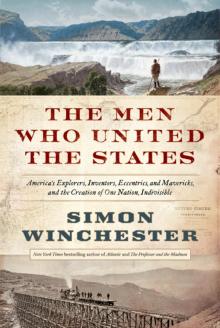 The Men Who United the States: America's Explorers
The Men Who United the States: America's Explorers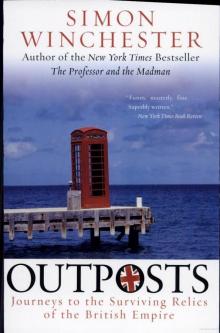 Outposts: Journeys to the Surviving Relics of the British Empire
Outposts: Journeys to the Surviving Relics of the British Empire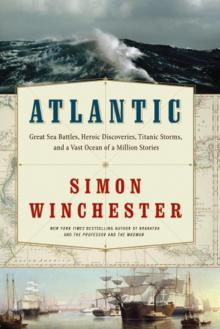 Atlantic: Great Sea Battles, Heroic Discoveries, Titanic Storms
Atlantic: Great Sea Battles, Heroic Discoveries, Titanic Storms The Professor and the Madman: A Tale of Murder, Insanity
The Professor and the Madman: A Tale of Murder, Insanity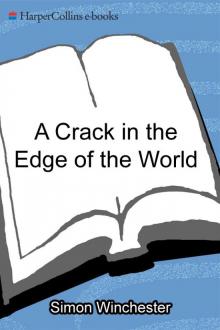 A Crack in the Edge of the World
A Crack in the Edge of the World The Perfectionists: How Precision Engineers Created the Modern World
The Perfectionists: How Precision Engineers Created the Modern World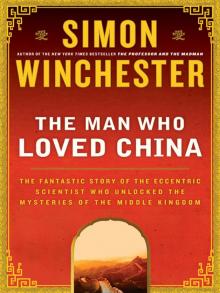 The Man Who Loved China: The Fantastic Story of the Eccentric Scientist
The Man Who Loved China: The Fantastic Story of the Eccentric Scientist The River at the Center of the World: A Journey Up the Yangtze
The River at the Center of the World: A Journey Up the Yangtze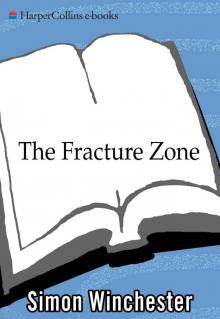 The Fracture Zone: My Return to the Balkans
The Fracture Zone: My Return to the Balkans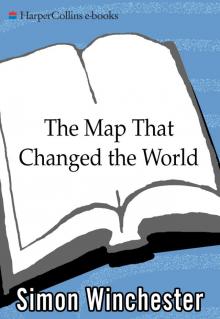 The Map That Changed the World
The Map That Changed the World Krakatoa: The Day the World Exploded
Krakatoa: The Day the World Exploded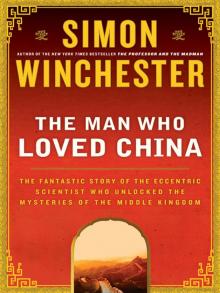 The Man Who Loved China
The Man Who Loved China The River at the Centre of the World
The River at the Centre of the World Bomb, Book and Compass
Bomb, Book and Compass The Perfectionists
The Perfectionists The Meaning of Everything
The Meaning of Everything Exactly
Exactly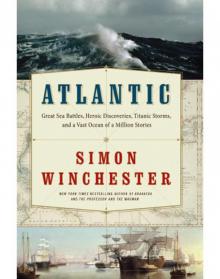 Atlantic
Atlantic Korea
Korea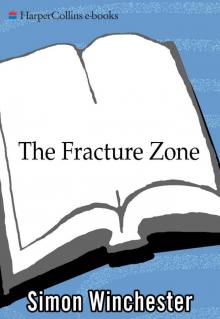 The Fracture Zone
The Fracture Zone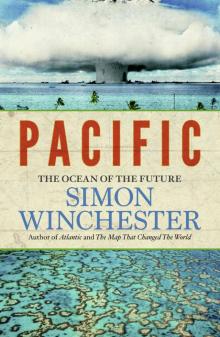 Pacific
Pacific Krakatoa
Krakatoa The Professor and the Madman
The Professor and the Madman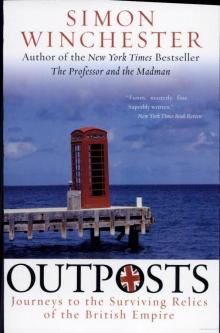 Outposts
Outposts